Ever since I got back from CES I have been waiting for this controller card. The thought of mixing some SSD’s with hard drives seemed exciting to me. I realize that the Z68 performs many of the same features but what attracted me most was this card could be used on any motherboard, as well as having the ability to scale the number of SSD’s it uses for caching. I have been a Highpoint fan for awhile so I was anxious to start testing one of these. As the card started shipping this week, I was to get my hands on one as I had pre-ordered the card.
Hardware setup
I opted to install this into what I call my secondary system. This is a system I use every day and the unit I use for ripping, converting, and video work. Below is the hardware specs of the machine.
Core I7-2600
Gigabyte Z68
16 Gigs of DDR3-1600
120 Gig Vertex 2
2T EARS Drive
2T FAEX drive
To test this card I added a 3T WD green drive for the main storage drive and for the cache, I added 2 OCZ Vertex 3 60 Gig SSD’s mounted in a Lian Li 2.5 to 3.5 inch adapter.
Software Setup
Before I get into the software, let me first say that when I first tried to load the CD that came with the card, the software loaded fine except it was the wrong software. What came on the disk was the standard RAID WebUI software not the version needed for the Rocket Cache. After downloading the updated version from their website, everything loaded correctly and it allowed me to go into the setup. The basic steps were to initialize the drives, which is pretty standard in RAID, then to select the configuration you wanted to create. You have to select the drives you want to use, the caching model, and the number drives you want as a cache. Clicking on the “more information” tab gives you the requirements needed and a brief explanation of each of the configuration models.
Configuration Results (single SSD, protection mode)
I tried the card in two ways. The first was a single SSD with “High Performance with Cache Performance”. This mode does not delay writes but caches reads. The results are what you would expect and writes are basically the same as a stand alone hard drive. The reads are cached and roughly the speed of the SSD you have attached.
Configuration Results (dual SSD, Maximum performance mode)
This is the configuration were things really happen. As you can see from the benchmarks, this brings things brings performance a new dimension. This gave me not only some great benchmarks but the overall usages was greatly improved. Things like writing video and moving files around were faster and it made the system really perform much better. The only exception to that was moving huge files like Blu Ray files. Large files do not seem to benefit from this controller in terms of writes.
The Verdict
Not everything is perfect with this controller. One annoying issue is the fact that you are only allowed 64 Gigs of cache no matter how many SSD drives you use. In my configuration, each 60 gig drive was roughly cut in half, basically using 32 Gigs from each drive. It raids the two drives together giving you the same as a single drive configuration but with the speed of the raid stripe. The remaining space is useable for standard storage. If you use three drives, you will be using approximately 21 gigs from each drive to equal the same amount but again at the speed of a three drive raid stripe. Intel also has a cache limitation but does not offer a multi-drive solution. Not shipping with the right version of the software is also annoying but easily remedied. Lastly, the price is a bit steep for this card. Granted it works, comes with the cable needed, and is the most flexible solution I have seen yet, but it is still a bit pricey. In the end it is all about the performance and flexibility. Caching has always been a comprise but the ability to cache a slower mirror with an SSD, or to cache a stripe of two hard drives with two SSD’s is downright appealing. I was not sure I would like this controller but as it stands now, this is a keeper. The performance for the capacity is just awesome as well as the flexibility. The choice of combinations could end up being what makes this a great solution, especially for the those who need the performance for gaming or video editing. Overall I really like this board and will be experimenting with more combinations. This is definitely going to find its way into my main rig once I get more comfortable with how it works.

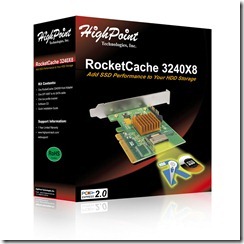
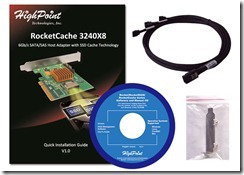
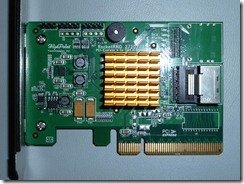
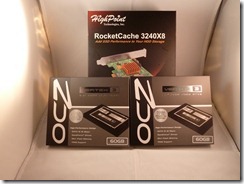
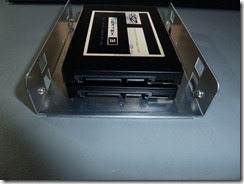
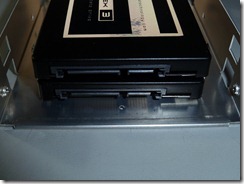

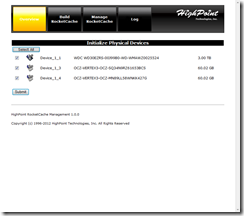
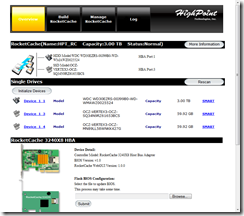
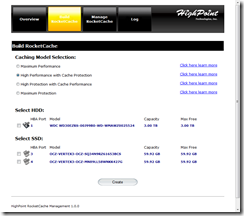
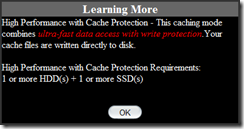
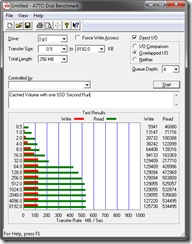

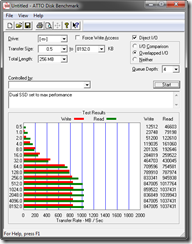
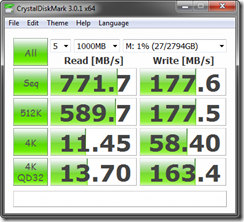
[…] Mike gives us his thoughts on the new Highpoint RocketCache 3240×8 card […]